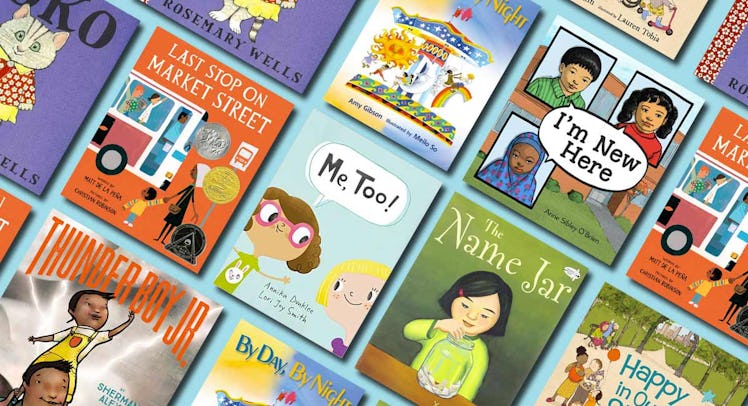8 Books That Teach Kids To Appreciate Other Ethnicities And Cultures
Think differently.

You’d like to think that childhood is an innocent time, but left to their own devices, kids can be cruel. They’ll tease each other for bringing odd lunches. They’ll tease each other for seemingly weird names. But if they’re teasing someone based on their race, religion, or ethnic background, that goes way beyond the boy who eats a peanut butter and tuna fish sandwich every day. These 8 books all center around characters of various ethnicities and backgrounds, and show kids that all human beings are more or less the same. Except for that weirdo who combines peanut butter and fish.
Last Stop On Market Street
Every Sunday CJ’s Nana takes him on the bus to visit a soup kitchen on Market Street. It’s not his favorite activity (and he keeps bitching about why he doesn’t have an iPod), but his grandma sees the trip as an important way of getting her grandson to pay attention to others. Of course, he starts to appreciate people from all walks of life — from his Nana’s blind friend to a guitar busker to the bus driver. Yes, bus drivers are people, too.
Ages: 3 – 5Last Stop On Market Street by Matt de la Pena ($9)
Yoko
You’d think that if you’re the new kid, and you come packing a sushi roll to lunch instead of a sandwich, everyone would praise your sophisticated tastes. But that’s not the case with Yoko. To school her philistine students, the teacher creates International Food Day so everyone can start appreciating different cuisines and cultural backgrounds. Like Italian pizza.
Ages 5 – 7Yoko by Rosemary Wells ($5)
By Day, By Night
This beautifully illustrated book shows how children and families around the globe, country-by-country, really go about their daily routines. See them learn. See them laugh. See them casually read books while riding yaks through wheat fields. Your kid will start to understand the similarities that all cultures have — like going to school and brushing your teeth — despite being thousands of miles apart.
Ages 4 – 7By Day by Night by Amy Gibson ($12)
Thunder Boy Jr.
Acclaimed Native American author Sherman Alexie spent nearly 10 years trying to find the perfect angle for his first children’s book. He finally arrived on this beautiful tale about young boy who’s bummed about being named after his dad, so he sets about taking a name that illustrates his own bad-assery. Not only will it teach your kid about self-acceptance — it’s one of the few children’s books on the shelf with a strong Native American protagonist.
Ages: 4 – 9Thunder Boy Jr. by Sherman Alexie ($13)
Happy In Our Skin
No narrative needed. This picture book celebrates our different appearances by highlighting of a variety of people from of all races and skin-tones. Children will dig the playful language and hopefully develop an appreciation of their freckles, birthmarks, dimples, and pigmentation. It also teaches them that skin “keeps the outsides out and the insides in.” That’s just solid medical advice.
Ages: 2 – 5Happy In Our Skin by Fran Manushkin ($12)
I’m New Here
I’m New Here follows 3 different immigrant children who are all new to life in America. After they go through various growing pains, each finds their footing through drawing, writing, and dominating at soccer. It’s a story that stresses that all people are immigrants in some capacity, and that welcoming newcomers is crucial for any community. At least that’s the goooooooooal!
Ages 5 – 8I’m New Here by Anne Sibley O’Brien ($17)
The Name Jar
Unehi is embarrassed to introduce herself on the first day of school because her Korean name is different and difficult to pronounce. Instead of just choosing an awesome one herself (like Maxine Power) she informs the class that she’ll be picking suggestions out of a jar. And when that doesn’t work, she learns to appreciate the beauty of her name and heritage.
Ages 3 – 7The Name Jar by Yangsook Choi ($16)
Me, Too!
Annie and Lillemor are BFFs. They like the same things. The same color. They both speak Swedish. But, when Lillemor finds a new French friend, Lilianne, Annie feels linguistically left out. Instead of posting an angsty message on social media, Annie finds that they all have similarities — the ability speak Annie’s weird made-up language. Or maybe they’re just speaking Danish.
Ages: 4 – 7Me, Too! by Annika Dunklee ($17)
This article was originally published on